The Geography of Immunology
Immunology in San Diego: Staking Claims on Torrey Pines Mesa
by John S. Emrich and Charles Richter
March/April 2019, pages 50–52
 Torrey Pines looking south, 2017
Torrey Pines looking south, 2017
Chris Nelson
Along the sandstone cliffs overlooking the Pacific Ocean in the north end of San Diego lies Torrey Pines Mesa, home to acres of preserved natural beauty and the unique conifer that gives the place its name. Since 1961, the mesa has also been the nexus of immunological research in the region. The history behind San Diego’s community of universities, research institutes, and biotech companies, however, starts at the beginning of the twentieth century.
The Early Decades
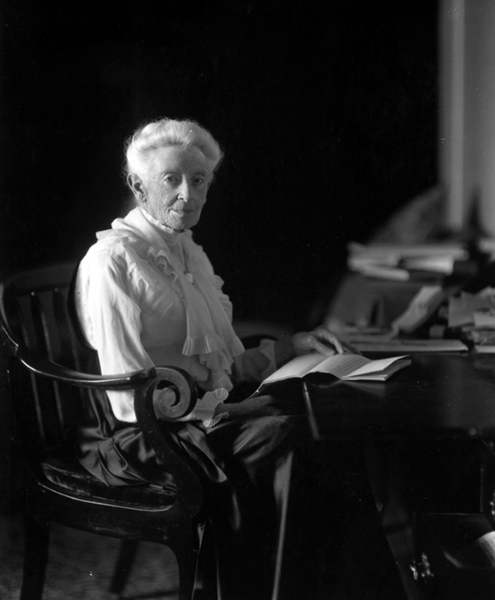 Ellen Browning Scripps, 1919
Ellen Browning Scripps, 1919
UCSD Special Collections & ArchivesBioscience research in San Diego began in 1909 when newspaper magnate and philanthropist Ellen Browning Scripps donated $150,000 to the University of California Regents to support the Marine Biological Laboratory in La Jolla, the western hemisphere’s first permanent marine science center.At the time, the city’s population was a mere 39,500 people. In 1924, inspired by the discovery of insulin, Scripps contributed an additional $300,000 toward the founding of the Scripps Memorial Hospital and Scripps Metabolic Clinic to investigate and treat diseases, especially diabetes.
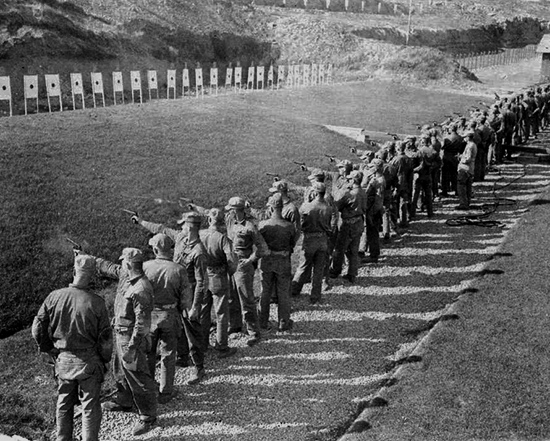 Recruits on the range at Camp Matthews, 1950
Recruits on the range at Camp Matthews, 1950
National ArchivesDuring the Second World War, Torrey Pines had been the location of Camp Callan, a U.S. Army anti-aircraft training facility. Though postwar demobilization brought a significant reduction in the military presence in San Diego, a U.S. Marine Corps rifle range at Camp Matthews continued to occupy a sizable portion of the mesa. With San Diego’s population rapidly expanding—it would reach 573,224 by the end of the 1950s—many residents of La Jolla, the increasingly affluent San Diego neighborhood just north of downtown, were growing more uncomfortable living so close to an active range.
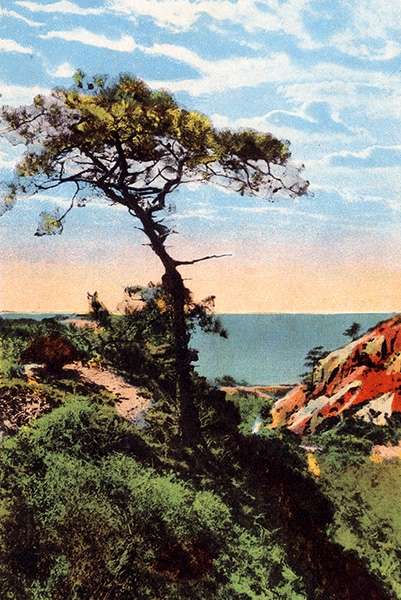 Postcard of a Torrey Pine, 1925
Postcard of a Torrey Pine, 1925
UCSD Special Collections & ArchivesAt the same time, three endeavors were underway that would help define the future of the mesa. The Scripps Clinic, which separated from the hospital and became the Scripps Clinic and Research Foundation, was actively recruiting biomedical scientists for its new research facility. Jonas Salk (AAI ’47) had begun searching for a site where he could establish a research institute following his success with the polio vaccine. And the University of California set its sights on building a new campus in the area.
With more than enough available land for all three institutions on the Torrey Pines Mesa, the city of San Diego found itself in a unique and enviable position. The city owned the rights to 49,000 acres of pueblo lands on the mesa and surrounding areas, and business and civic leaders decided to use that land to attract scientific research to the area.
University of California, San Diego
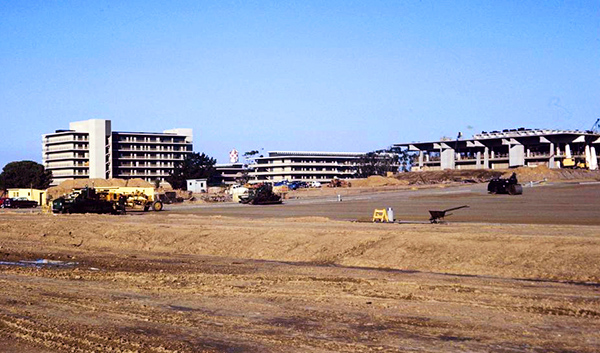 UCSD Revelle College under construction, 1964
UCSD Revelle College under construction, 1964
UCSD Special Collections & ArchivesThe University of California was the first to take advantage of the newly available real estate. Roger Revelle, then the director of the Scripps Oceanographic Institute, led the push to create an entirely new campus in San Diego rather than expanding the Los Angeles campus. General Dynamics, a large defense and aerospace company, helped ensure that the city would provide the land for it by promising to invest $1 million in the university. With this guarantee, the University of California, San Diego (UCSD), was officially established on November 18, 1960, as a school focused on “mathematics, physics, chemistry, and the earth and biological sciences.” As part of the initial campaign of recruitment, S. Jonathan Singer (AAI ’70) came to UCSD from Yale University in 1961 to join the new Department of Biology, where his research led to the fluid mosaic model of the cell membrane.
Fewer than 25 years after admitting its first class of undergraduates, UCSD was one of the top recipients of NIH funding, ranking 16th out of 1,636 institutions in 1987, with $73 million in grants.
Scripps Research
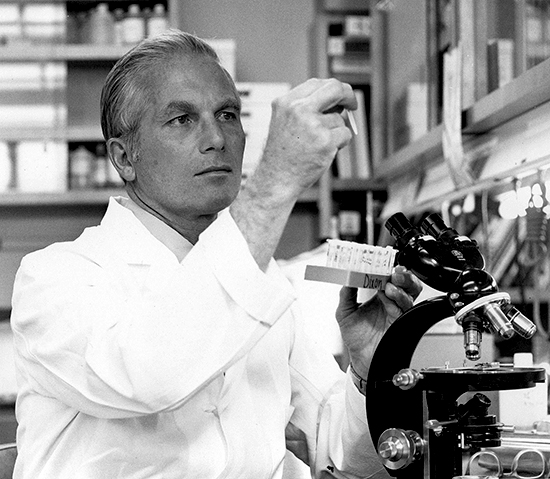 Frank Dixon in Laboratory, 1970
Frank Dixon in Laboratory, 1970
The Scripps Research InstituteThe establishment of UCSD on Torrey Pines Mesa opened up new possibilities for other institutions, and Scripps moved quickly to stake a claim of its own. The director, Edmund Keeney, wanted to transform the small clinic into “a Rockefeller Institute of the West Coast.” To launch the new Division of Experimental Pathology in 1961, Scripps recruited Frank J. Dixon (AAI ’50, president 1971–1972) and the rest of the “Pittsburgh Five,” a group of immunologists from the University of Pittsburgh. Dixon, William O. Weigle (AAI ’57), Charles G. Cochrane (AAI ’61), Joseph D. Feldman (AAI ’63, editor-in-chief, The Journal of Immunology, 1971–1987), and Jacinto “Joe” Vazquez (AAI ’59) brought several postdocs and other laboratory staff with them to La Jolla, forming the foundation of immunological research at Scripps.
By 1970, Dixon was the chair of biomedical operations at Scripps and, in 1974, he was made director of the entire research institute. Under his leadership all operations were consolidated at the new Torrey Pines campus in 1980. Since the arrival of the Pittsburgh Five in La Jolla, Scripps has consistently employed the largest number of AAI members in the San Diego area.
Salk Institute
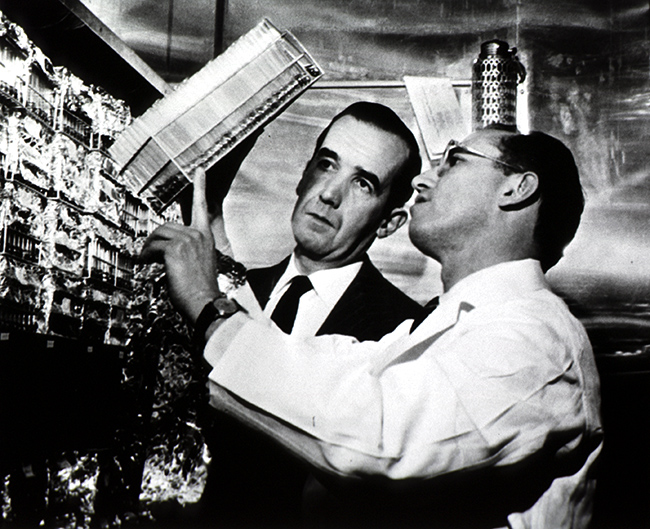 Jonas Salk with Edward R. Murrow, 1966
Jonas Salk with Edward R. Murrow, 1966
National Library of MedicineSeeking a suitable spot in California to found his new institute, Jonas Salk was initially leaning toward the San Francisco Bay area. On a scouting visit to Palo Alto, Salk got to know Melvin Cohn (AAI ‘51; remembered on page 58 of this issue), then a recent arrival at Stanford, as they drove around looking at potential sites. When Revelle invited Salk to La Jolla, however, he was impressed not only with the beauty of Torrey Pines Mesa, but also the opportunity to join a nascent community of research institutions. Unfortunately for Revelle, Salk successfully convinced the city of San Diego to grant him a prime strip of 27 acres overlooking the Pacific Ocean that Revelle had hoped would go to UCSD, leading to a bitter public conflict. Funding from the March of Dimes allowed construction of the Salk Institute for Biological Studies to begin in 1962.
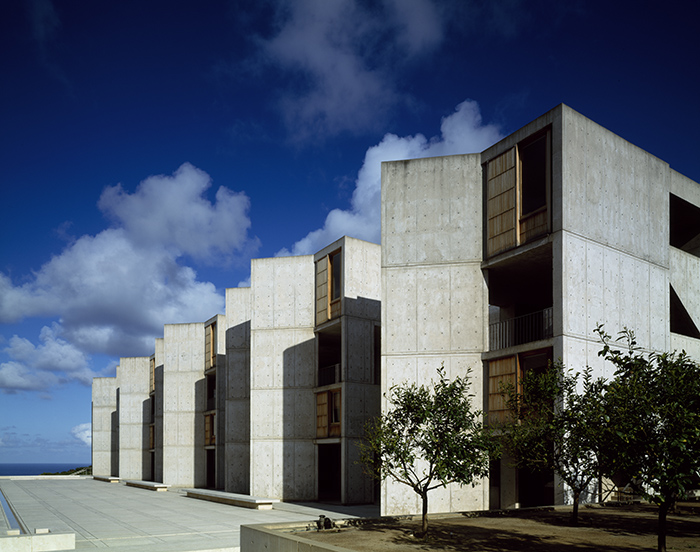 Salk Institute buildings designed by Louis Kahn
Salk Institute buildings designed by Louis Kahn
Library of CongressIn 1963, the first laboratory opened on the Salk Institute campus, boldly designed by famed architect Louis Kahn to promote collaborative work. Cohn was part of the inaugural cohort of six resident fellows hand selected by Salk and was also one of the organizers of the landmark 1965 Antibody Workshop in Warner Springs. At that gathering just outside of San Diego, immunologists and molecular biologists found common ground—and the modern direction of immunology took shape.
Legacy
The founding of the “big three” institutions on Torrey Pines Mesa—Scripps, UCSD, and Salk—established a beachhead for bioscience research in San Diego. Others quickly followed. In 1976, what is now known as the Sanford Burnham Prebys Medical Discovery Institute was founded as the La Jolla Cancer Research Foundation. More recently, the La Jolla Institute for Immunology, founded in 1989 by Kimishige Ishizaka (AAI ’58, president 1984–1985) and Teruko Ishizaka (AAI ’65), has grown rapidly to become the professional home to one of the region’s largest contingents of AAI member researchers.
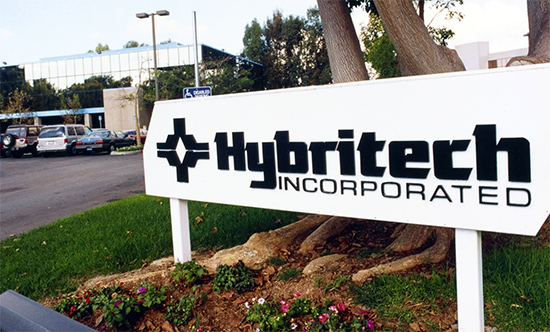 Hybritech, the first biotech company in San Diego
Hybritech, the first biotech company in San Diego
Courtesy of Science History InstituteOver the past 40 years, San Diego has also become a major hub for the biotech industry. In 1978, UCSD professor Ivor Royston launched the region’s first biotech company, Hybritech, which was a pioneer in the use of monoclonal antibodies. The company’s alumni have gone on to found dozens of other firms in San Diego. AAI members have founded or conducted research at more than 100 biotech companies in the area, which today include BioLegend, BD Pharmingen, Thermo Fisher Scientific, AnaptysBio, Arena Pharmaceuticals, and NantKwest.
In 1989, Ralph Reisfeld (AAI ’67) noted one obvious measure of the success of immunology and biomedical research in San Diego. Scientists, as he put it, no longer had to ask how to spell “La Jolla.”
References
- Bourgeois, Suzanne. Genesis of the Salk Institute: The Epic of Its Founders. Berkeley, CA: University of California Press, 2013.
- Chi, Kelly Rae. “The Birth of Biotech.” The Scientist. December 2001.
- Emrich, John S. and Bryan Peery. “The Emergence of Immunology in Pittsburgh.” AAI Newsletter. March/April 2014.
- Lindenstein Walshok, Mary and Abraham J. Shragge. Invention and ReInvention: The Evolution of San Diego’s Innovation Economy. Redwood City, CA: Stanford University Press, 2014.
- Phillips, Kathryn. “Closing in on Cancer.” Los Angeles Times Magazine. February 19, 1989.
- Singer, S. J. and Garth L. Nicolson. “The Fluid Mosaic Model of the Structure of Cell Membranes.” Science 175, no. 4023 (1972): 720–31.